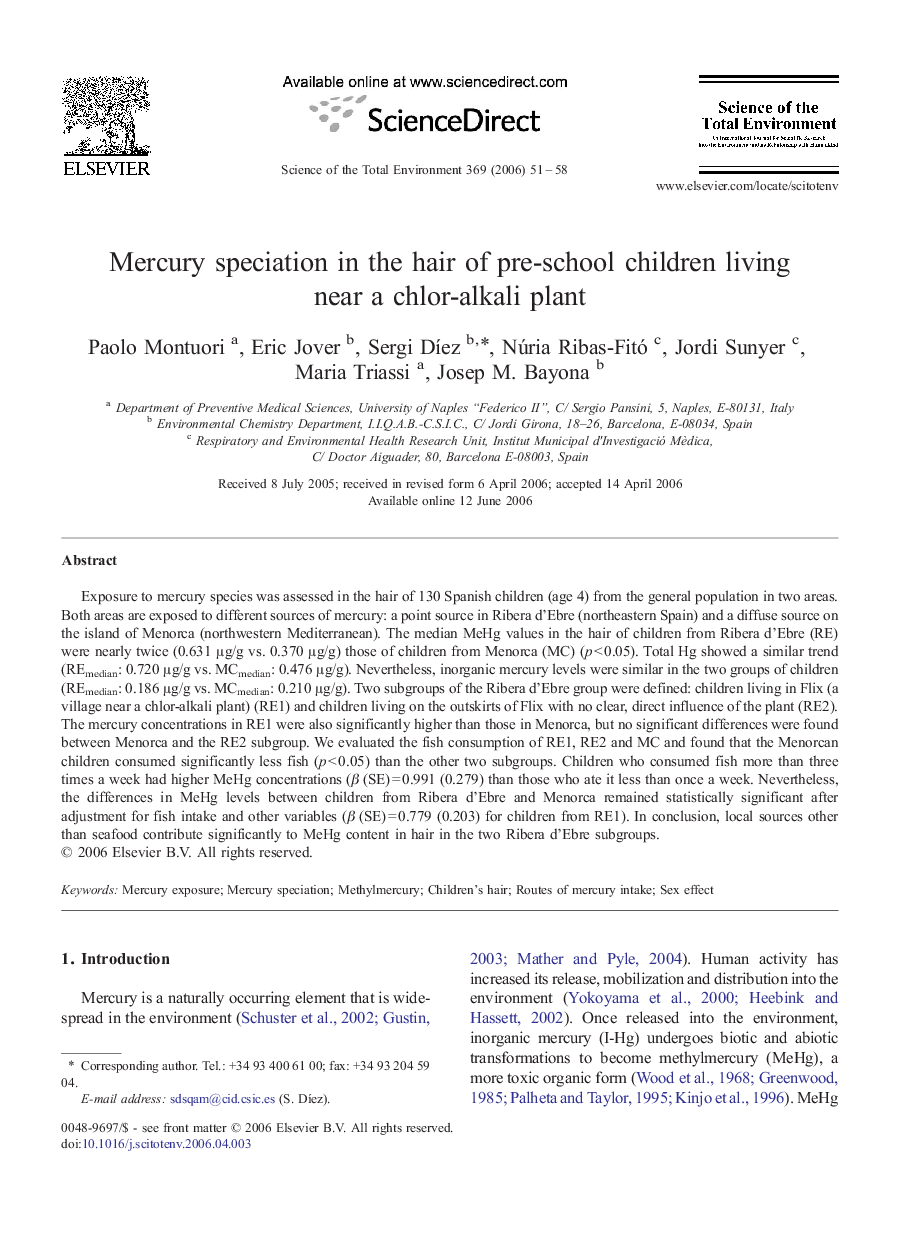| Article ID | Journal | Published Year | Pages | File Type |
|---|---|---|---|---|
| 4433937 | Science of The Total Environment | 2006 | 8 Pages |
Abstract
Exposure to mercury species was assessed in the hair of 130 Spanish children (age 4) from the general population in two areas. Both areas are exposed to different sources of mercury: a point source in Ribera d'Ebre (northeastern Spain) and a diffuse source on the island of Menorca (northwestern Mediterranean). The median MeHg values in the hair of children from Ribera d'Ebre (RE) were nearly twice (0.631 μg/g vs. 0.370 μg/g) those of children from Menorca (MC) (p < 0.05). Total Hg showed a similar trend (REmedian: 0.720 μg/g vs. MCmedian: 0.476 μg/g). Nevertheless, inorganic mercury levels were similar in the two groups of children (REmedian: 0.186 μg/g vs. MCmedian: 0.210 μg/g). Two subgroups of the Ribera d'Ebre group were defined: children living in Flix (a village near a chlor-alkali plant) (RE1) and children living on the outskirts of Flix with no clear, direct influence of the plant (RE2). The mercury concentrations in RE1 were also significantly higher than those in Menorca, but no significant differences were found between Menorca and the RE2 subgroup. We evaluated the fish consumption of RE1, RE2 and MC and found that the Menorcan children consumed significantly less fish (p < 0.05) than the other two subgroups. Children who consumed fish more than three times a week had higher MeHg concentrations (β (SE) = 0.991 (0.279) than those who ate it less than once a week. Nevertheless, the differences in MeHg levels between children from Ribera d'Ebre and Menorca remained statistically significant after adjustment for fish intake and other variables (β (SE) = 0.779 (0.203) for children from RE1). In conclusion, local sources other than seafood contribute significantly to MeHg content in hair in the two Ribera d'Ebre subgroups.
Related Topics
Life Sciences
Environmental Science
Environmental Chemistry
Authors
Paolo Montuori, Eric Jover, Sergi DÃez, Núria Ribas-Fitó, Jordi Sunyer, Maria Triassi, Josep M. Bayona,
